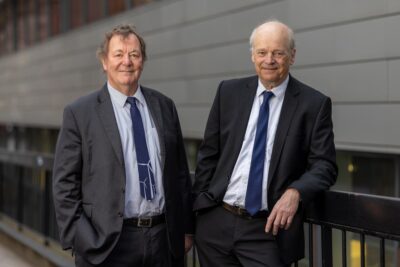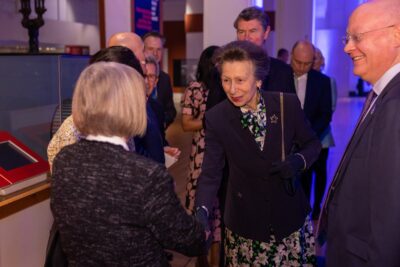At the ceremony last week, Lord Browne of Madingley, Chairman of the Queen Elizabeth Prize for Engineering Foundation, announced Denmark’s Henrik Stiesdal and Britain’s Andrew Garrad as the 2024 Laureates for their achievements in advancing the design, manufacture and deployment of high-performance wind turbines.
Henrik and Andrew have each spent more than 40 years pioneering the development of what have become the world’s largest rotating machines, with the longest blades now more than 120 metres long. Credited for the early technology and critical advances as the industry has evolved, the 2024 Laureates have each pioneered a system that is present in almost all modern wind turbines operating both onshore and offshore today.

HRH The Princess Royal attended the ceremony as Guest of Honour, making her first visit to the Science Museum since her husband, Vice Admiral Sir Tim Laurence, took over as Chair of Trustees of the Science Museum Group. Welcoming her to the event, Sir Tim noted the Princess’s lifelong interest in engineering, science and technology.
Her Royal Highness, who has attended every QEPrize winner announcement since the prize was founded, spoke of the importance of engineering in society and praised the Science Museum as a key inspiration for the thousands of young people who visit every year.

The world’s leading award for engineers and engineering, the annual £500,000 QEPrize promotes excellence in engineering and celebrates engineering’s visionaries. It inspires young minds to consider engineering as a career choice, and it encourages engineers to push the boundaries of what is possible.
Henrik Stiesdal built his first wind turbine in 1976, followed by a commercial turbine representing the three-bladed ‘Danish Concept’ that came to dominate the world market and was licensed to Vestas in 1979. Working with Siemens Wind Power he has played a major role in the growth and dissemination of wind power, including designing the turbine for the world’s first offshore wind farm in 1991.
Andrew Garrad built his first wind turbine in his parents’ field in 1971 and later co-founded the Garrad Hassan Group, which grew to become the world’s largest renewable energy consultancy. He specialised in mathematical modelling, pioneering the statistical performance analysis of wind farms underpinning their widespread adoption, and has helped to develop new wind energy markets all over the world.

Sir Ian Blatchford, Director and Chief Executive of the Science Museum Group, announced the winner of the Create the Trophy competition, chosen from entries from hundreds of young people from all over the world. Using a custom-made app, young people can use simple shapes to build complex, engaging and thought-provoking trophies echoing both the prestige of the QEPrize and the spirit of modern engineering.
This year’s Create the Trophy winner is 17 year old Sunil Thakkar from Ahmedabad in India, while finalists Samiha Nasher, Melissa Davies, Adam Daly and John Williams also attended the event.
Sir Ian applauded the impact of the QEPrize since its inauguration at the Science Museum in 2011. Last year the museum opened the Engineers gallery, which celebrates the work of the QEPrize Laureates and also looks to the future, exploring how a new generation of engineers is taking these remarkable innovations and developing them to bring further benefit to humanity.
Andrew Griffith MP, Minister of State for Science, Research and Innovation, praised the work of the Royal Academy of Engineering in setting up the QEPrize and in its wider work to promote excellence in engineering innovation, both in the UK and internationally.

With funding from the Department for Science, Innovation and Technology, the Royal Academy supports cutting edge research at every level, including the new Green Future Fellowships recently announced by the Prime Minister.
You can watch the highlights of the event below.
The post Wind turbine pioneers announced as winners of the Queen Elizabeth Prize for Engineering appeared first on Science Museum Blog.
